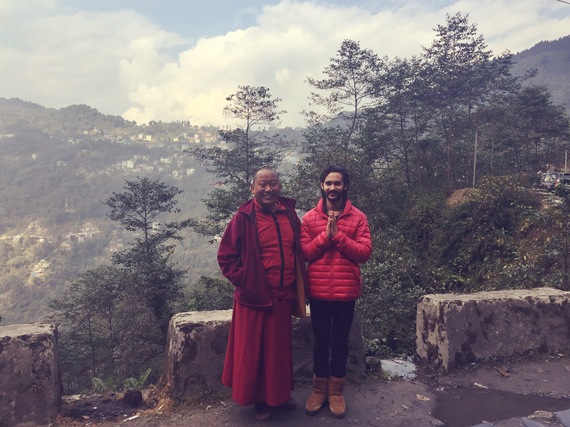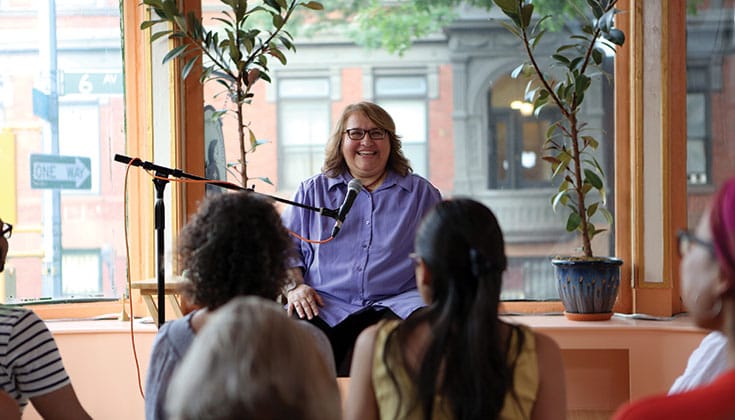Dharma companions is a blog focusing on Dharma activities, information dissemination and bringing awareness to the multifaceted aspects of Buddhism for the community from Shah Alam Buddhist Society (SABS). Postings should be of interest to Buddhist and anyone who seeks information on Buddhism. As the title suggest, we also aim to be a companion to those who seeks our company in this path that we undertake. May you be well, happy and peaceful.
Saturday, February 27, 2016
Friday, February 26, 2016
A Buddhist triad
Labels:
History
Location:
Shah Alam, Selangor, Malaysia
The Happiest Year Ever
DHAMMA REFLECTION
The word happiness is perhaps the most beautiful word in any language. Everybody wants happiness and tries to get it by any means. Some think that happiness comes from wealth, others believe that it comes from beauty, and still there are others who think that power and position can create happiness. But experience has shown us that true happiness does not come from these things, because they are fraught with dangers like worry and anxiety. So, if we cannot find happiness in wealth, beauty, power and others, we must find it somewhere else.
Labels:
Teacher,
Understanding
Location:
Shah Alam, Selangor, Malaysia
Thursday, February 25, 2016
Lessons From a Tibetan Buddhist Monk
by Adrien Field, The Huffington Post, Feb 9, 2016
Sikkim, India -- When I first met Lama Paljor in person, night had already fallen over the Kalimpong monastery and I was weary from the past nine hours of travel to reach the remote village in the Himalayan foothills.
 I bent to touch his feet, as is customary when meeting elders and spiritual masters in India. He stopped me, laughing and embraced me in a hug instead. This simple gesture of warmth spoke grandly about the man with whom I was to spend the next three days.
I bent to touch his feet, as is customary when meeting elders and spiritual masters in India. He stopped me, laughing and embraced me in a hug instead. This simple gesture of warmth spoke grandly about the man with whom I was to spend the next three days.I was introduced to Lama Paljor through TRAS, The Trans-Himalayan Aid Society, when I started my business Tibetan Socks one year ago and was looking for a children's education program to sponsor. Lama Paljor, through his private school, provides a free primary education to over a hundred children from the poorest families of his village in Sikkim.
Labels:
Inspirational,
Teacher
Location:
Sikkim, India
Wednesday, February 24, 2016
How Sharon Salzberg Found Real Happiness
BY LINDSAY KYTE|

 Photo:Fabio Fillippi
Photo:Fabio Fillippi
- Click to share on Google+ (Opens in new window)
Click to share on Pinterest (Opens in new window)1- Click to email this to a friend (Opens in new window) Facing her suffering head-on has made Sharon Salzberg one of today’s most relatable Buddhist teachers. Lindsay Kyte talks to Salzberg about her difficult life’s journey, establishing loving-kindness as a key practice in American Buddhism, and how we can all find real happiness.

 Photo:Fabio Fillippi
Photo:Fabio Fillippi
Sharon Salzberg knows suffering. At age nine, she was dressed in her Halloween ballerina costume, watching Nat King Cole on television, when something went horribly wrong. Her mother started bleeding violently and was whisked away amid the panic of flashing ambulance lights. That was the last time Salzberg saw her mother, who died two weeks later.
Salzberg was sent to live with her grandparents, and when she was eleven her estranged father appeared—a troubled, dishevelled stranger who told her, “You have to be tough to survive life.” Six weeks later, he overdosed on sleeping pills, and for the second time, Salzberg watched her parent being rushed away by ambulance. Her father was never to function outside of the mental health system again.
The adults in her life never talked about loss or grief, and Salzberg learned that silence meant safety. Little did Salzberg know that someday, plunging into the heart of her suffering would be her greatest teacher—and make her the renowned Buddhist teacher she is today.
Labels:
Inspirational,
Teacher
Location:
United States
Tuesday, February 23, 2016
Leshan Giant Buddha
From Wikipedia, the free encyclopedia
The Leshan Giant Buddha (simplified Chinese: 乐山大佛; traditional Chinese: 樂山大佛; pinyin: Lèshān Dàfó) is a 71-metre (233 ft) tall stone statue, built during the Tang Dynasty. It is carved out of a cliff face that lies at the confluence of the Minjiang, Dadu and Qingyi rivers in the southern part of Sichuan province in China, near the city of Leshan. The stone sculpture faces Mount Emei, with the rivers flowing below his feet. It is the largest stone Buddha in the world and it is by far the tallest pre-modern statue in the world.
The Mount Emei Scenic Area, including Leshan Giant Buddha Scenic Area has been listed as a UNESCO World Heritage Site since 1996.
Blue Eyes in Saffron Robes
Published on Jul 7, 2015
A video of daily life in Wat Pah Nanachat in 1979 but only recently released on Youtube. Includes Ajahn Jayasaro interviewed while still a novice. Also mentions a gas plant that uses "dung from the monks privy" designed by Physics graduate Ajahn Brahmavamso.
https://www.youtube.com/watch?v=BAH-joDeJ30
A video of daily life in Wat Pah Nanachat in 1979 but only recently released on Youtube. Includes Ajahn Jayasaro interviewed while still a novice. Also mentions a gas plant that uses "dung from the monks privy" designed by Physics graduate Ajahn Brahmavamso.
https://www.youtube.com/watch?v=BAH-joDeJ30
Monday, February 22, 2016
Three steps towards the total elimination of bad feelings
“…The Buddha taught three steps towards the total elimination of bad feelings. The first step is called dāna, which means charity. The second step we call sīla, which means keeping the precepts or abstaining from hurting other people and animals, other living beings.
The third step is what we call bhāvanā, which consists of two parts. The first part is samatha-bhāvanā, calming the mind by meditating, sitting, closing your eyes and concentrating on one object to stop your mind from thinking aimlessly.
After you have calmed your mind, it becomes peaceful and is then ready to learn the truth that the Buddha discovered. Because if you know the truth that the Buddha knew, then you can eliminate all of your bad feelings.
Labels:
Teacher,
Understanding
Location:
Shah Alam, Selangor, Malaysia
Sunday, February 21, 2016
Speaking to the mother of a new monk
Tan Ajahn : For someone, to give up the worldly life is not easy. It takes a lot of effort, special effort, so I think you should be glad. You will be like the Buddha’s mother. There is nothing better in the world than Dhamma. Dhamma can help you from being affected by all forms of suffering. Nothing else in the world can help you, but will only make you suffer more. The more you have, the more suffering you will have, because of your attachment.
For example you have attachment to your son, so when he had to leave, you became very unhappy. But if you have wisdom, then instead of being unhappy, you will be very happy because you know that he is doing something great, something that very few people in the world can do. It’s greater than winning an Olympic gold medal, so you should really be proud of him.
Labels:
Teacher,
Understanding
Location:
Shah Alam, Selangor, Malaysia
Subscribe to:
Comments (Atom)





